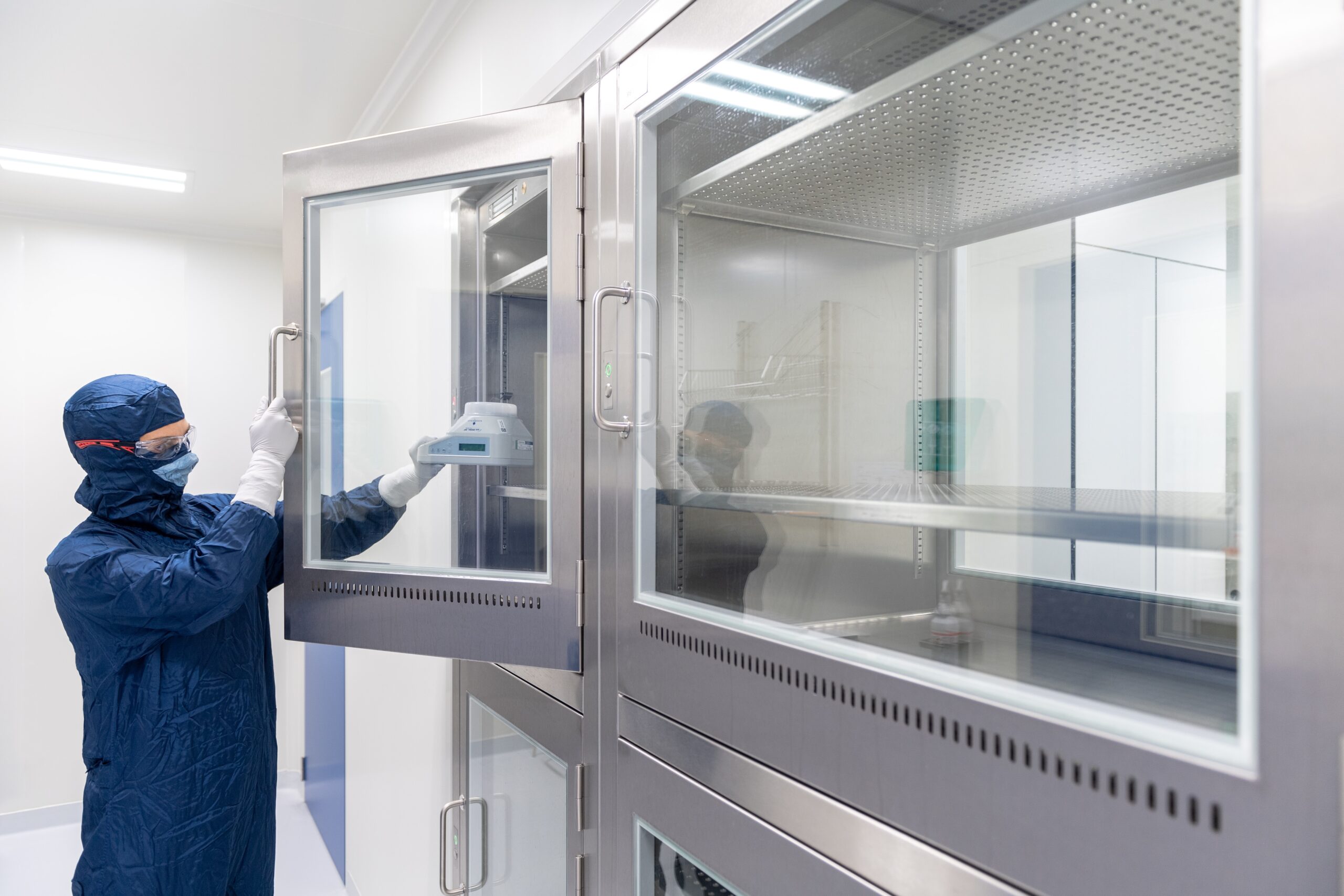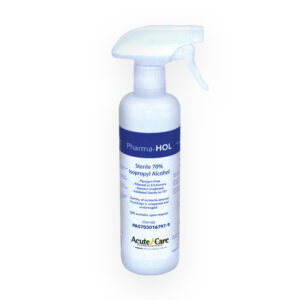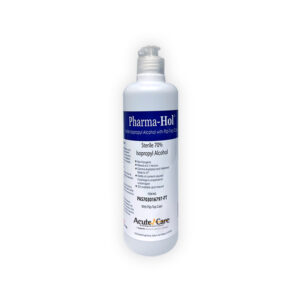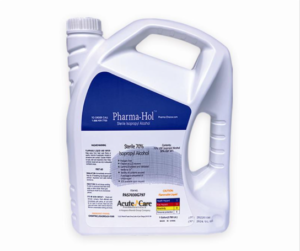
Cleanrooms are meticulously controlled environments designed to minimize the presence of contaminants. Maintaining an aseptic environment is imperative in pharmaceutical compounding, particularly under USP 797 and 800 guidelines. These standards govern the preparation of non-sterile, sterile, and hazardous drugs. Among the various tools and substances used to uphold these high standards, sterile alcohol is a fundamental cleaning agent. This article explores why sterile alcohol is preferred in cleanrooms, its recommended usage frequency, and its applications within USP 797 and 800 contexts.
Why Is Sterile Alcohol the Cleaner of Choice for 797 & 800?
Effective Disinfection
Sterile alcohol, typically isopropyl alcohol (IPA) or ethanol at 70% or higher concentrations, is known for its rapid antimicrobial action. This makes it indispensable for disinfecting surfaces and equipment in cleanrooms where compounded preparations must be free from microbial contamination, as mandated by USP 797 for sterile compounding.
Regulatory Organizations
CDC: According to the Centers for Disease Control and Prevention (CDC), alcohol solutions with 60-90% alcohol are effective in inactivating lipophilic viruses (e.g., influenza, coronaviruses), many bacteria (e.g., Mycobacterium tuberculosis), and fungi.
FDA: The FDA’s guidelines for aseptic processing emphasize the use of alcohol-based disinfectants, including sterile IPA 70%, as part of routine disinfection practices in cleanrooms.
Fast Evaporation
Sterile alcohol’s quick evaporation rate minimizes the risk of residues harboring contaminants or interfering with compounding processes. This is particularly important in cleanrooms, where maintaining a contamination-free environment is critical for compliance with USP standards.
Non-Corrosive Nature
Sterile alcohol is non-corrosive to most surfaces and equipment and is commonly found in cleanrooms. This makes it suitable for use on stainless steel, glass, and certain plastics, ensuring that the integrity of sensitive compounding equipment is preserved.
Ease of Use
Sterile alcohol is easy to apply, whether in liquid form or as pre-saturated wipes. This simplicity facilitates its frequent use by cleanroom personnel, ensuring consistent disinfection practices as required by USP 797 and 800.
How Often Should Sterile Alcohol Be Used?
The frequency of sterile alcohol use in cleanrooms depends on specific compounding standards and practices outlined by USP 797 and 800:
Routine Cleaning
In compliance with USP 797, high-touch surfaces and equipment in sterile compounding areas should be cleaned with sterile alcohol at least daily and more frequently if contamination risks are high.
Post-Process Cleaning
After each compounding process, surfaces and equipment must be disinfected to prepare for the next task. This ensures ongoing compliance with USP 797 and minimizes cross-contamination risks.
Scheduled Deep Cleaning
Deep cleaning schedules, often weekly or bi-weekly, are essential to disinfect cleanroom environments thoroughly. These cleanings should also follow USP 795 and 800 guidelines for non-sterile and hazardous drug compounding areas.
Where Can Sterile Alcohol Be Used?
Sterile alcohol’s versatility allows it to be used in various applications within cleanrooms, adhering to USP 797 and 800 standards:
Surface Cleaning
Workbenches, tables, and counters in compounding areas must be disinfected regularly with sterile alcohol to maintain a contamination-free environment, as specified by USP 797 for sterile preparations.
Equipment Sanitization
Instruments, tools, and machinery components used in compounding processes require regular disinfection with sterile alcohol to prevent microbial growth, as mandated by USP 797.
Glove and Garment Decontamination
Personnel involved in sterile and hazardous drug compounding often use sterile alcohol to disinfect their gloves and garments before entering or re-entering the cleanroom. This reduces the risk of introducing contaminants, which is in accordance with USP 797 and 800 requirements.
Packaging and Container Sterilization
Before introducing packaging materials and containers into the cleanroom environment, they are often wiped down with sterile alcohol to eliminate potential contaminants, ensuring compliance with USP 797 standards for sterile compounding.
What Options of Sterile Alcohol do we have for you?
We offer a variety of options for sterile IPA for your pharmacy. Our product, Pharma-Hol, comes in several sizes to fit your preference and application.
Features of Pharma-Hol and their respective sizes:
Pharma-Hol 16 oz. (Most Popular) – Product Code: PAS703016797-9
It is suitable for use throughout your pharmacy. This has been our most popular product for the past 25 years. It is available at most AmerisourceBergen, Cardinal, McKesson, and Medline warehouses.
Pharma-Hol 16 oz. (Flip top) – Product Code: PAS703016797-FT
Popular for USP 800 sterile compounding. The presence of a flip-top makes it ideal for cleaning with IPA without spreading any airborne HD residue that a spray bottle would cause.
Pharma-Hol 32 oz. (Large Size)- Product Code: PAS703032797
Looking to reduce time spent on material transfer processes? Utilizing the Pharma-HOL 32 oz bottles will reduce the number of bottles that need to be brought into the pharmacy.
Pharma-Hol Gallons (1 Gallon)- Product Code: PAS7030G797
Cleaning with sterile alcohol to clean your pharmacy’s floors, walls, and ceilings is easier with Pharma-Hol Gallons. Pour the IPA into your bucket system and use the amount needed with our clean room mopping systems to get an effective clean around your pharmacy.
Specifications of Pharma-HOL
- Pharma-HOL is 70% IPA / 30% WFI (Water for Injection)
- Validated Sterile
- Filtered with a .1 Micron
- Extremely low Sub-Visible Particulate levels, many times lower than industry specifications.
- Double bagged
- Gamma Irradiated
Sterile alcohol’s effectiveness, rapid evaporation, non-corrosive properties, and ease of use make it an indispensable cleaner in cleanrooms, particularly within USP 797 and 800 frameworks. Its application ensures that cleanrooms meet stringent contamination control standards, critical for the safe and effective preparation of compounded medications. Regular and strategic use of sterile alcohol helps maintain the integrity of cleanrooms, safeguarding the quality and reliability of compounded preparations and ensuring compliance with USP guidelines.
References:
- CDC “Guideline for Disinfection and Sterilization in Healthcare Facilities, 2008 (Updated 2024).”
- USP “Chapter <1072> Disinfectants and Antiseptics.”
- FDA “Guidance for Industry: Sterile Drug Products Produced by Aseptic Processing – Current Good Manufacturing Practice.”



